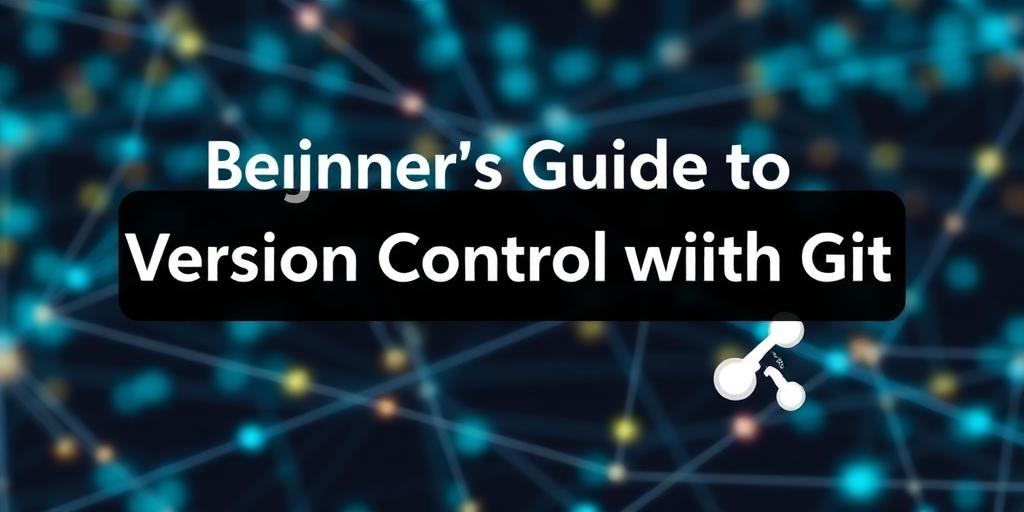A Beginner's Guide to Version Control with Git
In the landscape of modern software development and collaborative projects, the ability to track changes, revert errors, and integrate contributions seamlessly is paramount. This capability is provided by version control systems, and among them, Git stands as the industry standard. This guide offers a foundational understanding of Git, equipping beginners with the essential knowledge and commands to effectively manage their codebases.
Understanding Version Control
Version control is a system that records changes to a file or set of files over time so that you can recall specific versions later. It allows multiple people to work on the same project simultaneously without overwriting each other's work. Without version control, collaborating on projects, especially code, would be chaotic and prone to significant data loss. Git, specifically, is a distributed version control system (DVCS), meaning every developer has a full copy of the entire project history on their local machine, enhancing robustness and allowing for offline work.
Why Git is Indispensable
The adoption of Git is widespread due to its numerous advantages. It facilitates seamless collaboration, enabling teams to work concurrently on different features and merge their work efficiently. Git provides a complete history of every change made to a project, including who made it, when, and why. This meticulous record-keeping is invaluable for debugging, auditing, and understanding project evolution. Furthermore, Git's branching model allows for isolated development of new features or bug fixes, minimizing risks to the main codebase and promoting a stable release cycle. For individual developers, Git acts as a powerful undo button, allowing them to revert to any previous state of their project.
Core Git Concepts for Beginners
Before diving into commands, understanding a few core concepts is crucial:
- Repository (Repo): A repository is the central storage location for a project's files, including all versions and changes. It can be local (on your machine) or remote (on a server like GitHub or GitLab).
- Commit: A commit is a snapshot of your repository at a specific point in time. It's the fundamental unit of change in Git, encapsulating all modifications made since the last commit.
- Branch: A branch is an independent line of development. It allows you to work on new features or bug fixes without affecting the main codebase until your changes are ready.
- Merge: Merging is the process of integrating changes from one branch into another.
- Head: HEAD refers to the tip of the current branch, which is what you are currently working on.
Getting Started: Initial Setup
To begin using Git, you must first install it on your system. Official installers are available for all major operating systems. Once installed, configure your username and email address, as these details will be associated with your commits:
git config --global user.name "Your Name"
git config --global user.email "your_email@example.com"Essential Git Commands for Effective Version Control
Mastering these fundamental Git commands will provide a solid foundation for managing your projects:
git init: Initialize a New Repository
This command transforms an ordinary directory into a Git repository, allowing Git to start tracking its contents:
cd /path/to/your/project
git initgit add: Stage Changes
After modifying files, you must stage them. Staging acts as a preparatory step before committing, allowing you to select which changes will be part of the next commit:
git add filename.txt
git add . # stages all changes in the current directorygit commit: Save Changes
Once changes are staged, commit them to the repository. Every commit requires a descriptive message:
git commit -m "Descriptive commit message"git status: Check Repository Status
This command provides an overview of the current state of your repository, showing staged, unstaged, and untracked files:
git statusgit log: View Commit History
To see a chronological list of commits, including their authors, dates, and messages:
git loggit clone: Copy a Remote Repository
To obtain a copy of an existing remote repository on your local machine:
git clone git push: Upload Local Changes to Remote
After committing changes locally, send them to a remote repository (e.g., GitHub) to share your work with collaborators:
git push origin maingit pull: Download Remote Changes to Local
To update your local repository with changes from the remote repository, ensuring you have the latest version of the project:
git pull origin mainBranches: The Power of Parallel Development
Branches are critical for collaborative development. The main (or master) branch is typically the stable version of your project. For new features or bug fixes, you create a new branch, work independently, and then merge your changes back into main when complete. This practice ensures stability and allows for experimental development without affecting the primary codebase.
- Create a new branch:
git branch new-feature - Switch to a branch:
git checkout new-feature - Create and switch (shorthand):
git checkout -b new-feature - Merge a branch: (from the target branch, e.g.,
main)git merge new-feature
Conclusion
Git is an indispensable tool for anyone involved in software development, data science, or any field requiring meticulous version control. This guide has provided a comprehensive introduction to its core concepts and essential commands. By consistently utilizing these fundamental practices, beginners can effectively manage their projects, collaborate seamlessly, and maintain a robust history of their work. Continued practice and exploration of Git's advanced features will further enhance your proficiency in this powerful version control system.




